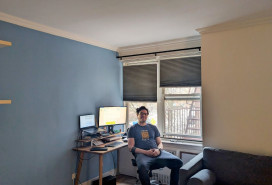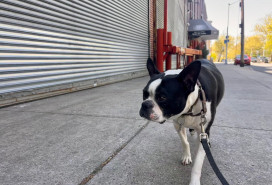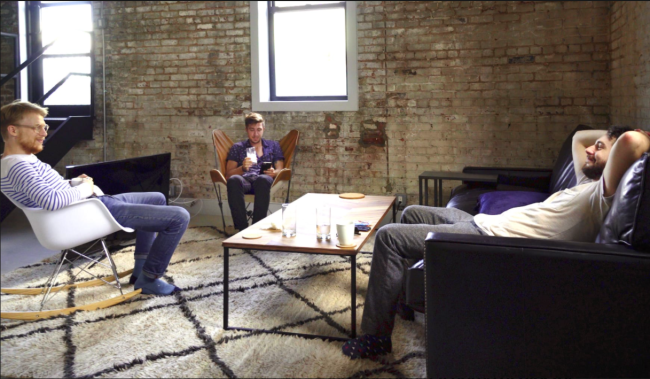One year, four bedrooms, eight roommates: My experience with co-living in NYC
- After a successful co-living experience in San Francisco, the author thought he knew what to expect
- But his NYC co-living building did not deliver on its mission to create a community and felt transient

Not every co-living situation is so Kumbaya. For one NYC co-living renter, new roommates came and left frequently, making it hard to form connections.
iStock
Sharing a four-bedroom apartment with a succession of eight different roommates is not how I pictured my first year in New York City. But that’s what happened to me at a Brooklyn co-living site, where it felt like we had a revolving door in our apartment.
In fact, there were several aspects of my co-living experience that felt left up to chance: I never knew who I would be getting as a new roommate, or whether the much-vaunted supplies would be replenished, or if I’d be able to use the bathroom before work.
Among the parade of roommates who shared a kitchen and bathroom with me were a fashion consultant, banker, nanny, traveling nurse, and not one, but two NYU students. These new roommates filtered in every month or two.
Editor's Note: Brick Underground's Inside Stories features first-person accounts of dramatic, real-life New York City real estate experiences. Have a story to share? Drop us an email. We respect all requests for anonymity.]
I signed a lease with a co-living company because I was enamored with the concept of communal living—and because I loved my time at Hive co-living in San Francisco. There I lived with 40 people in a converted hotel. We shared an industrial kitchen, massive common spaces, and had near-daily group activities like cooking classes and costume parties. As a result, I bonded with roommates, gaining friendships that continue even though we no longer live together.
But unfortunately, that wasn’t my co-living experience in NYC, which I recently left. Instead, there was a rarely used shared space and exclusive community events that I couldn't join, even though I tried. With the building’s 10 four-bedroom units, the place felt more like a rooming house than anything else. If I had stayed, the company's lease renewal agreement would've sent the rent just above $2,000 a month.
Going into this, I wasn’t scared to live with complete strangers, but one year later I realize I should’ve been a little more cautious. Seven out of eight roommates turned out to be reasonable human beings, but those are odds I probably won’t take again.
A stream of strangers
I liked the flexibility that co-living offers, since you don’t need to sign a lease for the standard 12 months. But that means everyone you live with will have different lease lengths—some people stay for a month or two, while others stay for multiple years.
The result is a constant churn of roommates. Of the eight people I lived with, I only really got to know three. For the rest, we usually said “hi” in the kitchen or elevator and nothing else.
When one roommate left, I had no way to find out anything about the new roommate taking their place. Twice, I was washing dishes when someone I didn’t recognize unlocked our door and said, “Hey, I’m your new roommate!”
And that lack of communication went the other direction too—when my lease term started, I couldn’t connect with my future roommates either. For example, when I asked the company for my future roommates’ contact information to figure out what was already in the apartment and what wasn’t (I wanted to know if anyone had a nonstick pan, coffee maker, or air fryer), they directed me to a building messaging system that wasn’t visible until after move-in.
As it turns out, with so many people passing through, even the current renters didn’t always know what items were supplied by the building and what was left behind by a previous tenant.
The culture in my space was very go with the flow, and varied a lot unit to unit. In our apartment, food on the fridge door was to share, on the shelf was personal. We shared dish detergent, but kept personal laundry detergent. Old roommates asked new ones to text if they had a guest over.
But relying on text messages to communicate sometimes backfired. One roommate sent passive aggressive texts when disagreements arose. When another roommate’s guest needed to use the shared bathroom, they opined the guest should go elsewhere “due to sanitary reasons.” When they found a hand towel had been moved in the bathroom, he texted in our group chat, “let it be the first & last time.”
In a way, I don’t blame him for communicating with us like that—even though we had lived together for several months, we still barely knew each other.
Losing the ‘co’ in co-living
There were no building-specific events even though when I signed my lease, the company’s website touted “curated” and organized events to bring together residents. As a result, my expectations were high.
There were some outings run by another company. I never got tickets to an event because, without fail, they were full every time I tried. This could’ve been because the events’ average ~12 spots each were open to all residents of the company’s smattering of buildings throughout the city.
Reading the fine print about supplies
The company’s hands-off approach became more apparent as weeks wore on. The website and email communications had promised biweekly supply drops of paper towels, dish soap, sponges and the like.
One week the drop was delayed—and upon reading the lease in advance of contacting them, I realized it was carefully worded: It didn’t actually say what supplies they’d provide, or whether they’d even provide them at all.
The final straw came two weeks ago: an announcement the company will “no longer be providing shared goods for the home.” Ultimately, one of the key benefits of living in a place like this—and one of the ways I justified the astronomical rent—are those supplies.
This wasn’t the first time the company had pulled a switcheroo. Last October it sent an email saying that the lease for my building was expiring in the spring, and that all tenant subleases would need to terminate early. I was offered a $50 rideshare credit to help me move, and fees would be waived if residents wanted to transfer to another building. I scrambled to search for friends who had a room free and started to plan my move
But then the following month, we received another email update letting us know we would stay and complete our lease term as planned. I was happy to have some certainty, but at that point, after all the turmoil, it was frustrating to re-pack and re-settle in for the remaining eight months.
What I learned…
- Despite what co-living companies may promise about building a community, you are effectively living with strangers who will come and go on their own schedule. In my experience, “neighborliness” outside your unit is not something one encounters; building-wide community structure was astonishingly absent. You will get a clean room and access to a bathroom, kitchen, and living room. Any community you desire, you may need to make for yourself.
- Proactive communication is necessary to prevent roommate disputes. That, and being brutally honest out of the gate. Sharing one bathroom between three people, I learned to say: “Hey, I really do need to be able to use the bathroom before I go to work.” We were able to get in a routine that actually worked.
- There are two kinds of co-living. First, there's places like this one, which effectively offers unoffensive medium-term housing with a whiff of collectivity. Second, there are more collaborative and eclectic homes with less-trendy websites and an actual phone number to call. If you’re looking for community, ask lots of questions and check out their Instagram to find out which one you are dealing with.
Some co-living places create friendships and offer a support system to grow in an unfamiliar city. Some solely care if you pay rent. There are times and places for both kinds of living, but know what you’re looking for before signing up.
Nick DeMarchis is a New York-based software engineer and freelance writer, and a recent graduate of Bucknell University.
You Might Also Like


























